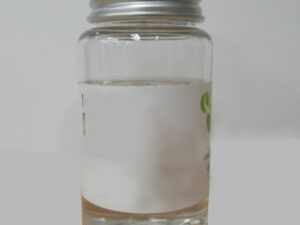Description
2-Methoxyethanol: A Versatile Solvent with Significant Hazards
2-Methoxyethanol, also known as methyl cellosolve, ethylene glycol monomethyl ether, or glycol monomethyl ether, is a clear, colorless liquid with a mild, ether-like odor. It’s a member of the glycol ether family, a group of solvents used across various industries due to their unique properties. While its versatility makes it valuable, 2-methoxyethanol is also known for its significant health hazards, demanding careful handling and strict safety protocols.
Uses and Applications
2-Methoxyethanol’s solvent properties make it a valuable component in numerous applications:
- Industrial Solvent: Primarily, it’s used as a solvent for resins, lacquers, varnishes, dyes, inks, and cellulose esters. Its ability to dissolve both polar and non-polar substances makes it effective in various formulations.
- Cleaning Agent: It’s found as a component in cleaning products and paint strippers, leveraging its ability to dissolve greases, oils, and other contaminants.
- Chemical Intermediate: 2-Methoxyethanol serves as a building block in the synthesis of other chemicals.
- Laboratory Reagent: It is used in various laboratory research applications, including the preparation of solutions and reactions.
- Semiconductor Industry: It’s employed in the manufacturing of semiconductors, often as a solvent for photoresists.
- Sealants and Adhesives: It contributes to the formulation of certain sealants and adhesives.
- Antifreeze: Although less common than other glycols, it can be used as an antifreeze component.
Properties that Dictate Use
Several properties make 2-methoxyethanol attractive for various applications:
- Excellent Solvent: Its ability to dissolve a wide range of substances, including both polar and non-polar materials, contributes heavily to its utility.
- High Boiling Point: The moderately high boiling point reduces evaporation, making it easier to handle and use in open systems.
- Water Miscibility: It is completely miscible in water, allowing it to be easily incorporated into water-based formulations and facilitates cleaning processes.
- Low Viscosity: Its low viscosity enhances its flow properties, which can be beneficial in applications like coatings and inks.
The Hazard: Toxicity and Reproductive Effects
Despite its utility, 2-methoxyethanol presents significant health hazards, primarily due to its toxicity and reproductive effects. Exposure can occur through inhalation, skin absorption, or ingestion.
- Reproductive Toxicity: This is the most concerning aspect of 2-methoxyethanol. Studies have shown that exposure can cause developmental problems, including birth defects, in animal models. This has led to strong recommendations for avoiding exposure, especially for pregnant women or those planning to conceive. Men exposed to 2-methoxyethanol may also experience fertility problems.
- Hematological Effects: Exposure can damage bone marrow, leading to anemia and other blood disorders.
- Central Nervous System Depression: High concentrations can cause symptoms such as dizziness, headache, nausea, and even unconsciousness.
- Skin and Eye Irritation: Direct contact can cause irritation to the skin and eyes.
Safety Measures and Regulations
Due to the serious health risks associated with 2-methoxyethanol, strict safety measures are essential when handling it:
- Engineering Controls: Adequate ventilation, such as fume hoods or local exhaust ventilation, is crucial to minimize inhalation exposure.
- Personal Protective Equipment (PPE): Wear appropriate PPE, including gloves, eye protection (goggles or face shield), and respiratory protection (respirator) when there is a risk of exposure. Suitable glove materials are often nitrile or neoprene, but specific recommendations should be obtained from the Safety Data Sheet (SDS).
- Safe Handling Practices: Avoid contact with skin, eyes, and clothing. Wash thoroughly after handling. Do not eat, drink, or smoke in areas where 2-methoxyethanol is used.
- Storage: Store in tightly closed containers in a well-ventilated area away from heat, sparks, and open flames.
- Training: Employees handling 2-methoxyethanol must receive thorough training on the hazards and safe handling procedures.
- Regulations: Many countries and organizations have established exposure limits and regulations regarding the use of 2-methoxyethanol. These regulations often aim to minimize worker exposure and protect public health. Consult local regulations for specific requirements.
Alternatives
Because of the health concerns, efforts are often made to replace 2-methoxyethanol with less toxic alternatives. Depending on the specific application, potential alternatives include:
- Other Glycol Ethers with Lower Toxicity: Some glycol ethers, such as propylene glycol ethers, have lower toxicity profiles.
- Esters: Ethyl acetate or butyl acetate may be suitable in some applications.
- Alcohols: Isopropanol or ethanol might be viable alternatives in certain cases.
- Water-based Solutions: Where possible, switching to water-based formulations can eliminate the need for organic solvents altogether.
Conclusion
2-Methoxyethanol is a versatile solvent with applications across diverse industries. However, its significant reproductive and hematological toxicity necessitates meticulous handling and strict adherence to safety protocols. Efforts should be made to minimize exposure and explore the use of safer alternatives whenever feasible to protect workers and the environment. The availability and accessibility of readily available Safety Data Sheets (SDS) are paramount to the safe usage of this product.














Reviews
There are no reviews yet.